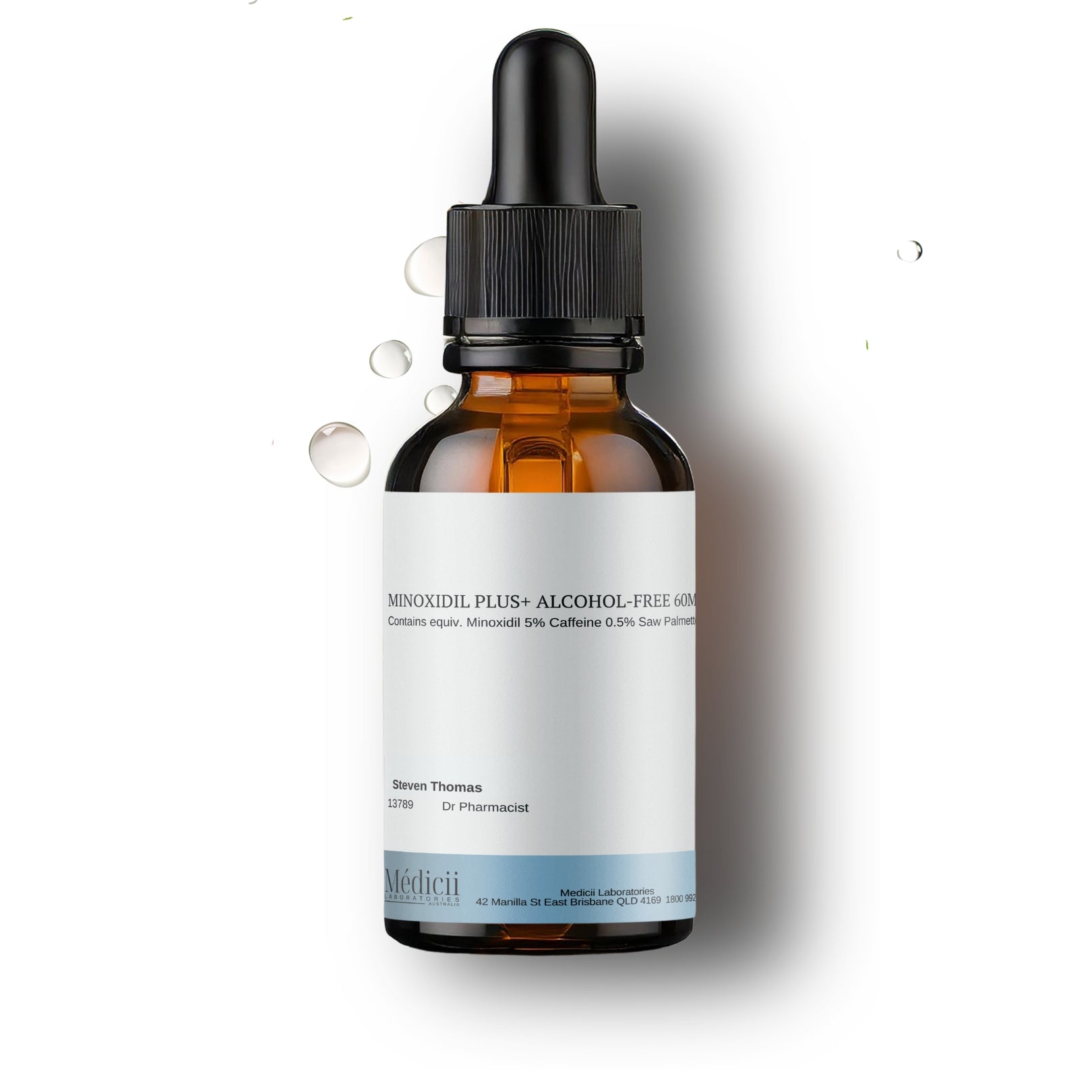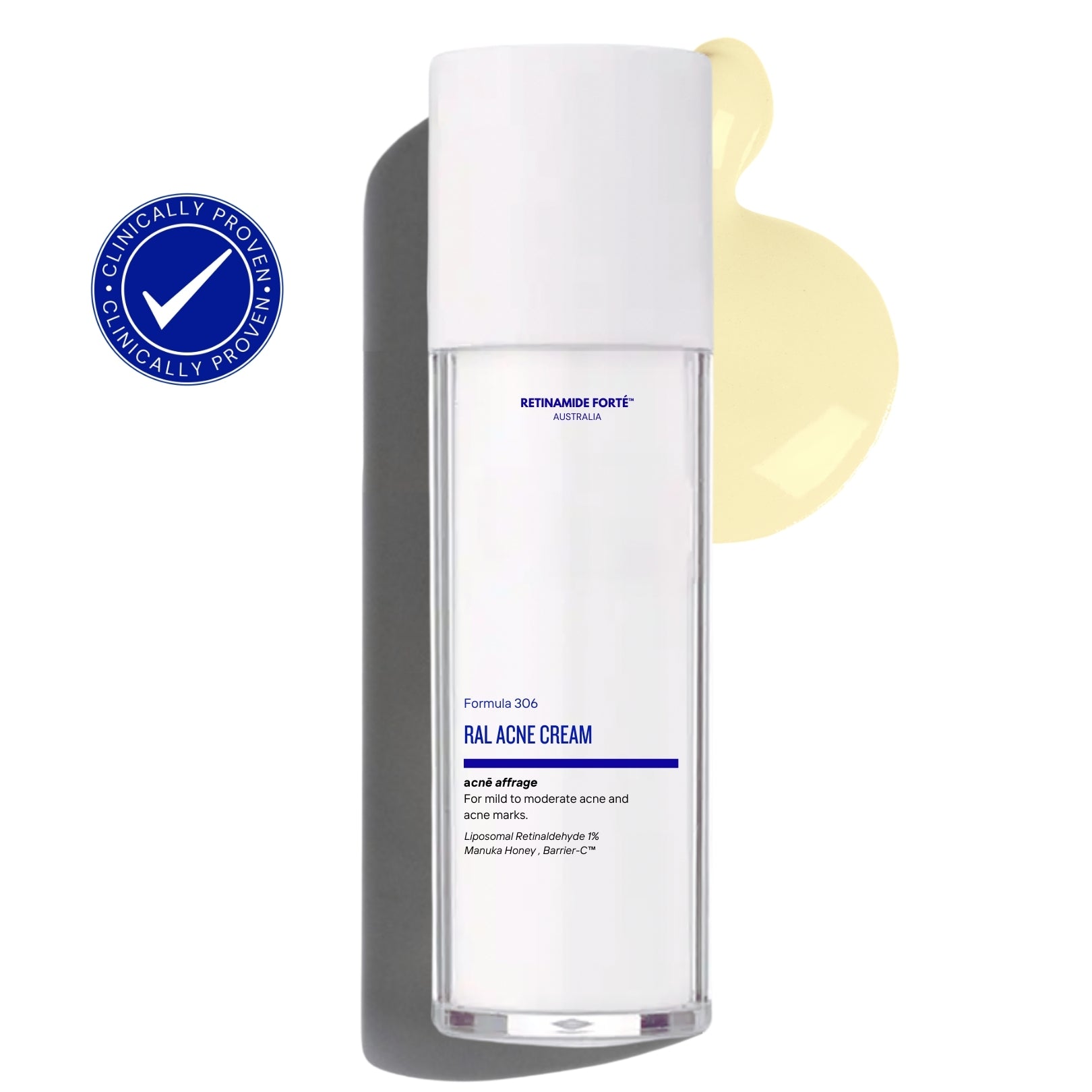
Lets talk Formulations!
Propylene glycol is a common skincare ingredient and is widely used in pharmaceutical formulations and cosmetics and is well tolerated. However, when it comes to hair loss, it is a different story.
The rest of this article will summarise why Propylene Glycol cannot be tolerated by some individuals and the alternatives to consider.
Why is Propylene Glycol an irritant in Minoxidil solutions?
Minoxidil is insoluble in water and is freely soluble at high concentrations of alcohol and propylene glycol. In fact, for every 100ml of Minoxidil 5% solution, you need over 45ml of propylene glycol to dissolve Minoxidil.
In contrast, only 5-10ml of Propylene Glycol is required to make 100ml of skincare serum. This difference is huge!
"too much of a good thing can be bad."
How can you overcome this?
If propylene glycol is the cause of your scalp irritation, it is now possible to dissolve Minoxidil completely in solution using less propylene glycol and even no propylene glycol. Propylene glycol-free formulations are personalised formulations. They are made by compounding pharmacists and is available for almost the same cost as full propylene glycol formulations.
Low Propylene Glycol formulations generally have more alcohol in them to help dissolve Minoxidil completely into solution. They have approximately 10% Propylene, the same concentration that is found in skincare. Low Propylene Glycol formulations are a good option for people who can tolerate alcohol.
Foam formulations contain approximately 10%-20% alcohol. There are two types of foam formulations - one with very little propylene glycol and one with no propylene glycol. Dosing accuracy is more difficult to replicate with foam so the user experience is not so great.

Gel formulations are a new option to consider. They are great for balding areas or areas that have very little hair. Gels can be massaged into the scalp without the product dripping everywhere. The dosing accuracy for gel is also superior to foam. This is important when we start incorporating other ingredients with Minoxidil and Finasteride. Some older gel bases have a small amount of benzyl alcohol to promote a fast drying effect. Modern gel bases are alcohol-free.
Hydro-alcoholic formulations contain water as well as alcohol (they are not alcohol-free). Hydro-alcoholic formulations have 10-15% alcohol and is perfect for someone who wants the benefits of a fast drying formula but with less alcohol. The disadvantage with hydro-alcoholic formulations is that they have a shelf life of 30 days compared to alcoholic formulations.
Alcohol-free and Propylene Glycol-free Minoxidil is the most recent novel innovation. The absence of alcohol have sparked concerns that Minoxidil cannot be absorbed. If this theory holds true, then all pharmaceutical creams and gels should also be formulated with alcohol but they are not.
A 2023 clinical study by Udare et al showed that alcohol-free formulations proved to be just as effective as alcoholic minoxidil formulations and with significantly less side effects and is better tolerated. The study followed their patients for 12 months.
How do I know which formulation base is right for me?
There are several factors to consider when deciding which formulation base is right for you. This includes ease of use, cost, travel and storage.
These options can be discussed with your doctor if you have unique requirements.
Although topical solutions are the most popular because they are easy to travel with, easy to use and the least expensive to compound, they may not be for everyone.
Author: Helen Huynh (B. Pharm) MPS
References:
- Udare, S et al (2023). "Low-Alcohol or Alcohol-Free Minoxidil Formulation for the Management of Androgenic Alopecia: an Indian Perspective." International Journal of Trichology. 15(1): p13-17, Jan-Feb 2023.
- Olsen, E et al. (2002). "A randomized clinical trial of 5% topical minoxidil versus 2% topical minoxidil and placebo in the treatment of androgenetic alopecia in men." Journal of the American Academy of Dermatology, 47(3), 377 385.
- Roberts, J et al (2014). "Response to Topical Minoxidil in Female Androgenic Alopecia." Journal of Dermatologic Therapy. Jul-Aug;27(4):252-4










